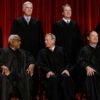Japan’s economy contracted by 1.6 percent annually between July and September, according to preliminary results released Sunday night. Following a second-quarter contraction of 7.3 percent, Japan has fallen into a recession, casting a shadow over Prime Minister Shinzo Abe’s economic plan “Abenomics.” Japan should end its quantitative easing, which has increased its national debt, and focus on structural reforms and promoting growth through innovation.
After taking office in December 2012, Prime Minister Abe and governor of the Bank of Japan, Haruhiko Kuroda, initiated additional quantitative easing in the hopes of increasing inflation to 2 percent annually and bringing Japan out of stagnant economic growth. Along with a plethora of additional economic and political measures, Abe also initiated a consumption tax increase that had previously been agreed upon before Abe became prime minister. The consumption tax increased from 5 percent to 8 percent in April to help mitigate Japan’s growing public debt. (Japan’s debt is 240 percent of GDP.)
Often used as a comparison: In 1997 Japan raised its consumption tax from 3 percent to 5 percent. Similar to the current tax increase, 1997 Japan saw a huge decline in its second-quarter GDP, 3.8 percent. But after the 1997 tax increase, Japan’s third-quarter GDP saw an increase of 1.7 percent. Japanese officials expected third-quarter GDP growth at a minimum of 2 percent while outside spectators were less enthusiastic but still expected positive growth.
Japan’s economy has seen little growth over the past 20 years. During the 1990s and 2000s, Japan experienced multiple occasions of quantitative easing and monetary stimulus, but with little to no avail. Since 1990, Japan’s money supply has seen a 75 percent growth, while savings as a share of GDP is almost 60 percent below previous peaks. The Japanese yen is now as devalued against the U.S. dollar as it was leading into the 2008 financial crisis. Since 2000, Japan has had interest rates at less than 1 percent.
According to the Cabinet Office, private residential investment fell by 24.1 percent, contributing to a 3.4 percent contraction in private demand. Meanwhile, public demand increased by 2.8 percent with an 8.9 percent increase in public investment. Gross domestic income fell by 3.2 percent. While prices have been rising in Japan, private consumption growth has been slow due to slow growth in real wages—despite Japan’s surplus of job openings and low unemployment (around 3 percent).
By Tuesday, Prime Minister Abe will decide whether to dissolve his Lower House and call for a snap election in mid-December in order to avoid making the decision on increasing the consumption tax again in 2015. Regardless of whether he gets the results he desires, Abe should dig in, resist any additional quantitative easing, and focus on reforms that will bring growth back to Japan.






























